Week of April 19 – 25, 2020
Back to Britain we go with a sunny, and rainy, venture from London to Brighton and back in vintage automobiles. One of these beautiful machines, a 1904 Darracq roadster, is the “Genevieve” of the title. Another is a 1904 Stryker, and other models take part in the rally. Anyone who likes seeing these old autos is bound to enjoy this comedy, although there are many other merits and rewards to it.
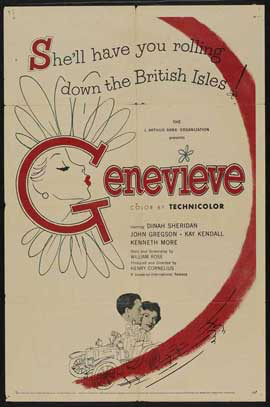
Two couples are the focus of Henry Cornelius’ comic adventure. Wendy and Alan McKim (Dinah Sheridan, John Gregson) have taken part in the annual London to Brighton rally, which takes two days, there one day and back the next, for many years, ever since they married. But Wendy has had enough. She would rather attend a party. Wendy and Alan fight about it, but she relents because he enjoys the rally so much.
Going along, in the Stryker, is their friend Ambrose Claverhouse (Kenneth More). Every year he brings along a different girl, hoping to enjoy some romance in Brighton, and every year he is foiled. Complicating matters this trip is the fact that Alan is finally becoming tired of Ambrose’s attentions to Wendy (Ambrose introduced the two, and has never let Alan forget it). But Ambrose is bringing along a new girl, a model named Rosalind Peters (Kay Kendall) whom he barely knows, but would like to know better.
The film, deftly directed by Cornelius from a clever script by William Rose, follows these poor souls to Brighton and back as the cars act up, tempers flare, the weather turns and circumstances work against everybody’s plans. It is filmed in color, rare for the British films of the era, and the vintage autos take center stage, driving sedately along British roads while newer models zoom past in both directions. This contrast, the current world vs. the way things used to be, is present throughout the story, and works on several levels. It informs the comedy and often delivers the punchlines.
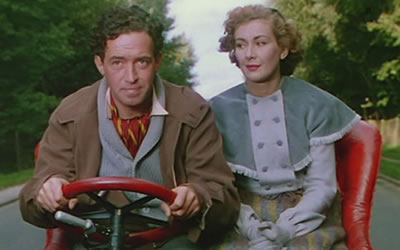
As much as the visuals (and sound effects) center on the cars, the movie is about the people. Alan and Wendy are in a bit of a rough patch, and Alan has had enough of Ambrose’s flirting with his wife. Tempers flare enough so that they wager on who can get back to London first — although such wagering is not allowed during the rally. Each man is adamant that their machine is better, and each is willing to boldly break some rules to prove it.
Yet it is the women, forced to simply tag along and support their drivers, who provide the propulsion for this movie. Wendy is getting sick and tired of her husband’s fondness for the silly car, but she cannot help but worry about him and prod him ever onward. She enjoys Ambrose’s attentions but knows who she married; still, she isn’t above letting Alan feel the heat. And Rosalind is on her first antique car rally. She is not really prepared for the conditions, the pressures, the dangers or the dirt. She bonds with Wendy more than Ambrose, but is her own woman. Her highlight occurs at the nightclub in Brighton, where after a few drinks she decides to prove that she can play the trumpet better than the band’s performer. Which she does. And while her trumpet playing is not visually all it could be, it is still a terrific, funny sequence.
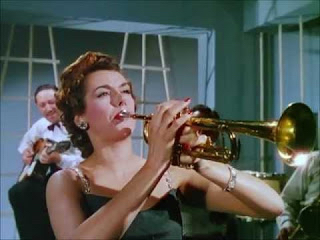
The film’s first half is pretty mild, as we get to know the characters, the rally premise and see how badly things can get when the cars misbehave or things don’t go to plan. Its second half is much more manic, as the wager encourages the men to act ever more rashly, the action speeds up, fate intervenes in some very interesting and distracting ways, and everybody’s nerves are tested. While few of us have vintage machines such as these, we’ve all, I believe, experienced some of the tribulations that these two couples encounter on their way back home to London. Take it from me, such misadventures are much funnier when they happen to people on the movie screen then when they occur to me or you in real life.
The climax in London, as both couples race toward Westminster Bridge, is handled beautifully. Even as the pressure mounts, one of the couples chooses to act politely and humanely — it is this moment that really defines what is important, and why. And then fate has one more trick up its sleeve. It’s quite a satisfying conclusion. It’s quite a satisfying, enjoyable movie.
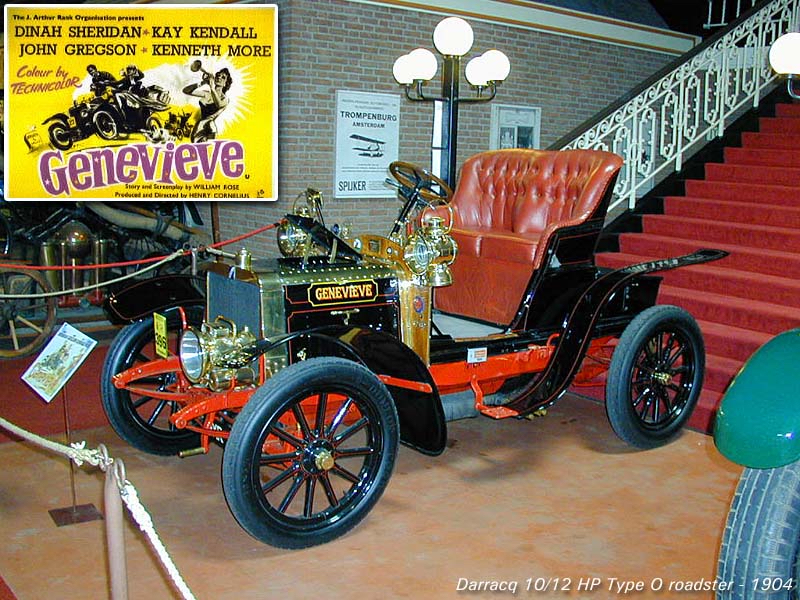
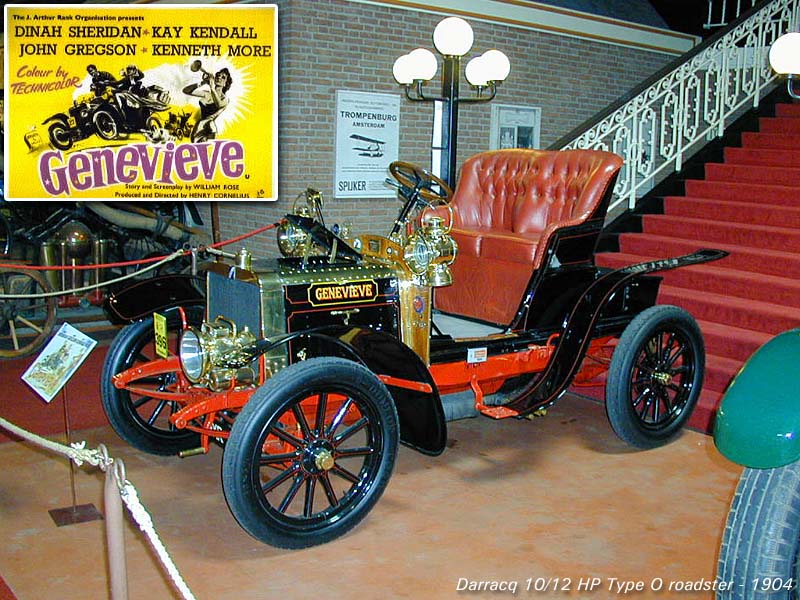
Genevieve is a rather obscure movie that I first saw sometime during the 1990s. It has finally been released on DVD and is even available for streaming. It’s one of those movies about which people say, “they don’t make movies like that anymore.” Indeed they don’t. Which is a shame, because Genevieve is a hoot. It was quite popular in its era, and was even nominated for two Oscars (Best Writing, Story and Screenplay, for William Rose, and Best Music, for Larry Adler’s iconic harmonica score). It actually won the BAFTA award for Best British Film of 1953 and was a co-winner of the Best Foreign Film award at the Golden Globes the following year.
If you’re looking for a cute road trip movie, something with humor and heart, you can’t go wrong with Genevieve. The humor is British, but it is also universal and very cleverly presented. Things are a bit more risqué than in American films of the era, but that just adds to its appeal. ☆ ☆ ☆. Backdated to April 19, 2020.
Similar films include It’s a Mad, Mad, Mad, Mad World (1963), The Great Race (1965), Those Daring Young Men in Their Jaunty Jalopies (1969), Cannonball (1976), and the two Cannonball Run movies.
